Masking and Endemic COVID
Most Americans are choosing to live a normal life in abnormal times.
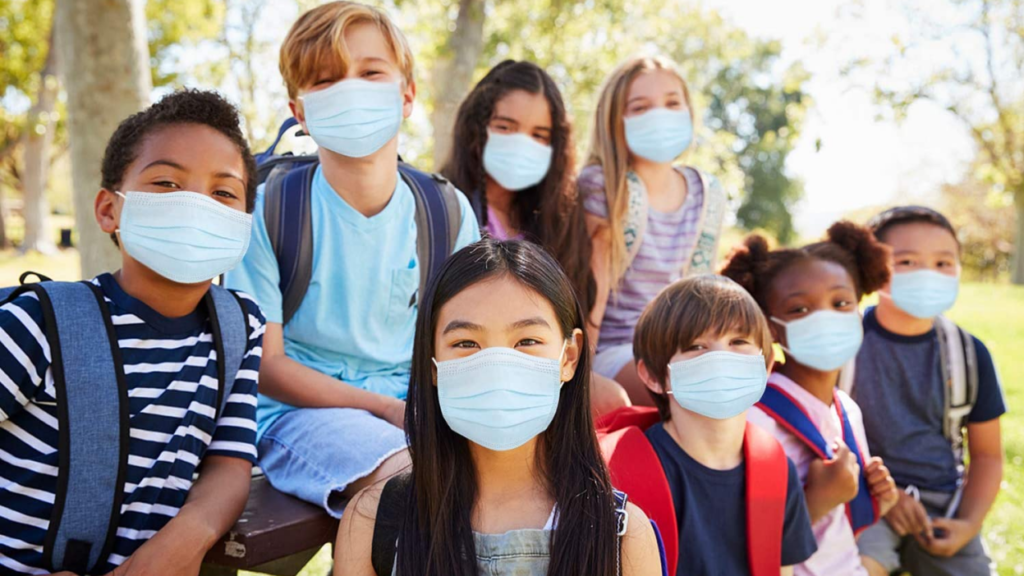
WaPo columnist Leana Wen writes, “I’m a doctor. Here’s why my kids won’t wear masks this school year.”
For those unfamiliar, she’s not just any doctor. She served as Baltimore’s Health Commissioner for a number of years before becoming a professor of health policy and management at George Washington University. In addition to her MD, she obtained a master’s in health policy while a Rhodes Scholar.
And, no, she’s not a COVID denier.
For the first year of the coronavirus pandemic, my family and I were extremely cautious. I gave birth in April 2020, shortly after covid-19 hit. To protect the baby, my husband and I pulled our then-2-year-old son out of preschool. We socialized outdoors only, at a safe distance from others. I limited indoor activities to work and grocery shopping, and I was never without my N95.
After coronavirus vaccines became available to adults, I wrote that vaccinated people could relax their precautions based on their level of risk tolerance. My tolerance remained low because of my unvaccinated kids. I still avoided indoor restaurants and masked at indoor gatherings unless they required both proof of vaccination and recent negative tests. Our son restarted preschool, but we made sure that he always masked. Playdates were strictly outdoors only.
So, what changed?
Everything changed last winter, with the arrival of omicron. This variant is so contagious — with its derivative strains such as BA.5 even more so — that preventing covid-19 became nearly impossible. Before omicron, the Centers for Disease Control and Prevention estimated that one-third of Americans had been infected with the coronavirus. By the end of February, after the first omicron surge, that share climbed to nearly 60 percent, including 3 out of 4 children.
It became clear that the goal I’d hoped for — containment of covid-19 — was not reachable. This coronavirus is here to stay.
But, still, wearing a mask would mitigate the risk, right?
With this new, indefinite time frame, the benefit-risk calculus of mitigation measures shifted dramatically. I was willing to limit my children’s activities for a year or two but not for their entire childhood.
Given how careful we’d been, it wasn’t easy to change my mind-set to accept covid-19 as a recurring risk. But the high transmissibility of new variants meant that we would have to pay an increasingly high price if our goal was to keep avoiding the virus. I began trying to think of the coronavirus as I do other everyday risks, such as falls, car accidents or drowning. Of course I want to shield my children from injuries, and I take precautions, such as using car seats and teaching them how to swim. By the same logic, I vaccinated them against the coronavirus. But I won’t put their childhood on hold in an effort to eliminate all risk.
Now, as regular readers know, this is pretty much where I am. When my daughters went back to school, they were required to mask. The moment that mandate was lifted last spring, I allowed them to go unmasked—precisely because they were vaccinated and otherwise in excellent health.
It helped, too, that omicron is milder than previous variants. The likelihood of severe outcomes, including the feared multisystem inflammatory syndrome in children, is much lower now than it was during the delta or alpha surges. The odds of developing long covid are also lower with omicron compared with previous strains. Vaccination, while less protective against symptomatic disease due to omicron, continues to provide excellent protection against severe illness.
Over the past several months, my family has eased back on our precautions. We see other families indoors, without masks or testing, and have resumed traveling and attending events. Our son, who turns 5 this week, started indoor soccer and indoor playdates. Our pandemic baby, now 2, went to day camp this summer. Both kids are starting school next week. Now that they are fully vaccinated, we do not plan to limit their activities, and — like most parents in their school — will not be masking them in the classroom.
I don’t know what the ratios are here locally. I gather that it wildly depended on neighborhood when the mandate was lifted. Now, though, my daughters report that few kids are masking at their middle and elementary schools.
Again, it’s all about risk calculation and acceptance:
I accept the risk that my kids will probably contract covid-19 this school year, just as they could contract the flu, respiratory syncytial virus and other contagious diseases. As for most Americans, covid in our family will almost certainly be mild; and, like most Americans, we’ve made the decision that following precautions strict enough to prevent the highly contagious BA.5 will be very challenging. Masking has harmed our son’s language development, and limiting both kids’ extracurriculars and social interactions would negatively affect their childhood and hinder my and my husband’s ability to work.
Life is trade-offs and she’s making her choices—and choices for her young children—with eyes wide open. Thus far, the six people in my household have managed to avoid COVID (or, at least, a symptomatic case) but my oldest stepdaughter, who lives on her own, had it a few weeks back. Many of my co-workers have had symptomatic cases in recent months, though, so it won’t shock me in the least if our luck runs out.
Other families will view these trade-offs differently. Some will maintain strict precautions to protect a severely immunocompromised household member. Some may decide on something in-between; for example, kids might resume their pre-pandemic activities, but the family still masks at airports and avoids large events. Others may choose to keep one-way masking at school, because, to them, the benefit of reducing infection outweighs the perceived downside of masks. All these decisions should be respected; there are no easy, one-size-fits-all answers.
To be clear, my family’s decision not to mask our kids should not be mislabeled as being antimask; we would never stigmatize other parents and caregivers for the difficult choices they must make. We are also far from covid minimizers; I’ve written extensively about the dangers of the coronavirus to children and am clear-eyed about the unknowns of long covid. Rather, my approach to this school year reflects the evolution of the pandemic and the acknowledgment that avoiding covid-19 cannot be the singular metric of people’s overall health and well-being.
The pandemic was so politicized by former President Trump and the media-entertainment complex on his side that masking became a cultural fight rather than a public health issue.

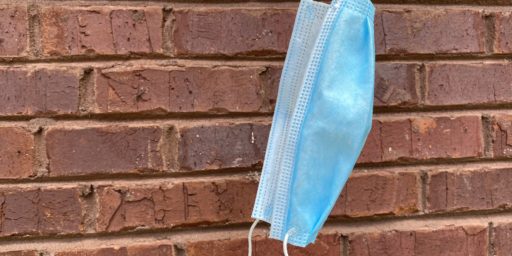
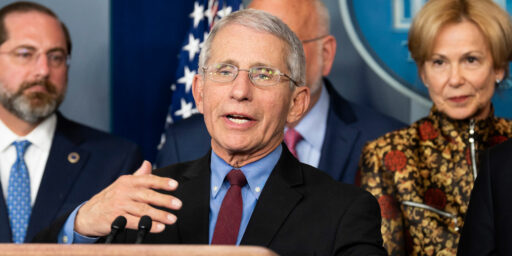
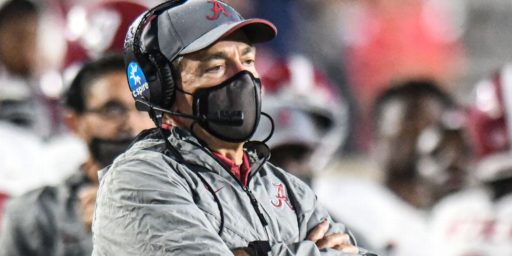
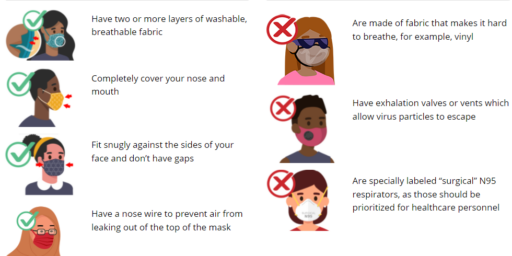
I still mask up in indoor public spaces – stores and offices. Not a question.
I don’t want you to catch any shit I got, and I sure as fuck don’t want to catch yours.
I’m where she’s at too. The original variant was contagious enough that public health officials recognized it couldn’t be stamped out. Instead the goal was to “flatten the curve”, i.e. use masks, contact tracing, etc to slow the rates of infection to keep the hospitals and morgues from getting overwhelmed until, hopefully, a vaccine could be developed. People have forgotten what those first few weeks were like in the COVID epicenter, the greater NYC area. Bodies were being stored in freezer railroad cars, and makeshift temporary hospitals were going up in the middle of winter. Amazingly, we got a vaccine in record time, and it was amazingly effective – against the original variant. But by then new variants had taken over, each more contagious than the last, and with the latest the vaccine didn’t do much to prevent infection, although it did reduce disease severity substantially.
Despite what some believe (Sorry, Kathy!) we were never going to be able to stamp this out absent a vaccine that worked on all the variations. Areas that took appropriate measures fared about as well as could be hoped. Of course trump states and trump areas of sane states fared much worse, but that was a choice they made.
One million dead in the US.
Two years later we shrug it off.
James, if you drive a convertible with a blog-appropriate vanity plate I passed right by you on 123 yesterday afternoon. Next time I’ll roll down my window and say Hi.
@Mikey: That was me!
It’s always been about risk management. But people really don’t know how to assess risk. They just don’t have the tools so they depend on “gut instinct” and feelings.
And this prevented people from getting to a state of rational decision making.
It is still going on. On neighborhood chat boards I still read comments like: “I’m fully vaxxed and boosted and I still got COVID, therefore the vaccines don’t work.” Or: “The vaccines are still experimental, we don’t know the long term effects”.
Etc. I try to be generous in my reaction but there are some days…..
I don’t have kids, but I do have quite a few friends who are teachers. Dr. Wen’s children are vaccinated. How many children are?
It’s strange territory. Most non-crazy parents vaccinate their kids against things like measles and other childhood diseases before they go to school; those are required. Covid vaccines seem to be treated like flu shots for kids–get them or not, big shrug.
The larger risk, after all, isn’t for the kids, it’s the teachers.
It is baffling to me how many grown adults don’t understand the role of vaccines, what they are meant to address, and efficacy rates.
Whatever the next pandemic is, reactions are going to be terrifying.
What precisely is the “-risk” of wearing a mask?
All I know is I’m getting the new booster shot as soon as I possibly can. So are my kids.
Genuine question: for those still wearing masks in public, I’m curious as to what would have to happen for you to go back to not wearing one? Is there any point at which you would deem the risk acceptable, given that it’s not just COVID OUT there but also many other serious diseases that can be transmitted through the air?
For context, I sometimes still wear a mask in situations I deem high risk, but these are fewer and fewer. For instance, on Friday I’ll be flying and will wear a mask on the plane but not in the airport.
@de stijl:
I don’t think any of us are shrugging it off. We’ve simply adapted our response based on changed risks and new information.
I’m vaxxed and boosted (I’ll be getting a second booster sometime soon). I’m reasonable healthy. I don’t go out very much. And the latest variants, while more contagious, are less severe. All of this puts the risk at about the same as getting the flu*. That’s a risk I’m willing to accept.
=========
* Before last year, I’d never gotten the flu vax. The last time I had the flu was in 1996.
@Stormy Dragon: As noted in the column, “Masking has harmed our son’s language development.” It’s done the same for my 11-year-old, who’s hard of hearing and dyslexic. Beyond that, it simply radically changes the nature of childhood play.
@MarkedMan: It’s funny but I would assess the risk in just the opposite way. Having flown a couple of times this summer, I think the greater risk, given the crowded terminals, is actually higher in the terminal than the plane. But I have no information or data to back up that instinct.
Also, the consequences of catching COVID (in my personal assessment) is way down from last year so my personal risk assessment of COVID is considered low.
@MarkedMan:
Maybe the pandemic just unleashed my inner germphobe, but honestly I may never stop because it’s become more of a “why wasn’t I always doing this?” thing.
Not constantly getting everyone’s colds is nice
TL;DR: I’m sick and tired of taking precautions to keep from getting sick and maybe dying.
The rest is rationalization.
@de stijl:
Two years later, we are no longer an immunologically naive population. Almost everyone has either had COVID or the vaccine and therefore has some resistance. We could have gotten there with a lot fewer bodies if the COVIDiiots hadn’t opposed mitigation. And we would have a lot fewer bodies piling up if more people would get boosted. But, until we get a universal COVID vaccine, this is about as good as things will get.
@Stormy Dragon:
Apparently they make other people uncomfortable.
There are two people I talk to face to face sometimes, who claim they can’t hear me if I’m masked (which is all the time). Other who are around hear me just fine. A few times, I’ll remove the mask, turn away from them, and speak softer, and they have no trouble hearing that.
I agree with her. Remember how masks work, they are not a force field. They reduce the amount of virus you exhale, best at droplets but also reduce aerosols, how much depending upon the mask. The same goes on the inhalation side. Early covid was infectious but nothing like current variants. Even when unmasked you were unlikely to contract covid with contacts of less than 15 minutes. Wearing a mask extended that safety period, again how long depending on type of mask and virus concentration in the air. Between wearing a mask and controlling your exposure you had at least some control in reducing your risk.
The new Omicron variants change everything. They are infectious with very casual contact. It has been reported to have been contracted just by walking past someone who had covid. This suggests that exposure to much lower levels of viral load are infectious, meaning the amount of time masks give you protection is now very limited probably verging on useless unless you wear a real N 95 and are reliable in its use ie you dont cheat.
So I still wear a KN 95 or N 95 at work. I do it mostly to protect my pts at this point though it will help protect me. If I do a high risk procedure like a bronchoscopy then I still wear full PPE.
Steve
@MarkedMan:
When community transmission is down to officially dozens of cases per day, meaning it’s only a few thousands in fact, which seems enough in a metro area of several million people.
Provided it’s not flu season, and there are no colds circulating. I’ll keep masks handy for such things.
I’d also always wear one, regardless of COVID rates or seasons, in crowded places like airports and planes. Who knows what else you can get from large crowds.
@Kathy: I understand your viewpoint, but don’t share it. I don’t make a judgement on this at all. (I reserve judgement for those people who get their medical advice from Fox News loons and Facebook.) but I am curious, so let me ask the question a different way: if we could go back to pre-COVID times, and knowing what you know now about disease transmission, would you still wear a mask?
@Stormy Dragon: This makes sense to me, although it’s not a trade off I would make. At this point, unless something changes, I’ll mostly wear a mask if it is me that is sick and I have to go out in public. And, given that I can work from home if I need to, I won’t go into work at all if I have a cold or anything else transmissible.
A good thing that could come from this is if we adapt the Asian response from SARS: people who must be out and are sick wear masks and if they don’t are publicly shamed. And because this is the norm, those who choose to wear a mask anytime they are in public don’t stick out.
@steve: Very clear explanation.
@MarkedMan:
Knowing what I know now, I’d go back in time to the 70s and start wearing a mask then.
COVID aside, I had no idea what it was like not to have a cold every few months. Even when I started using hand sanitizer frequently c. 2006, I still got them at least once a year, sometimes twice.
My last one was on march 2020. I haven’t even had a sniffle since then.
@steve:
According to Worldometers, global cases stand at around 600 million. That’s under 10% of the global population.
We can assume this figure is wrong, since testing is spotty or as low as to be useless in many places, and not even all who get sick also get tested.
What I would love to know is the real figure. I estimate at least double, and maybe four times as much. That would mean between 1.2 and 2.4 billion cases worldwide. the latter is almost 35% of the population.
But we also hear things like in the US and UK, for example, as many as 60-70% of people have been infected. That would require testing and reporting to fail by a factor of 8 or so.
People plain suck at managing pandemics. One day we’ll be hit by something that’s very deadly, say 50-70% mortality rate even with treatment, and our planet will go back to its pre-human state.
@Kathy:
This is me. I have a difficult time separating vocal range from other noise. I rely heavily on watching a person’s mouth to understand what they’re saying*. This is a condition known as “hidden deafness”–because it doesn’t show up in the controlled conditions of a hearing test–and it affects approximately 40% of adults.
A mask removes the ability for me (and others like me) to supplement what we hear with what we see. A good mask also muffles the bilabial (P/B) and frictive (F/V, S/Z) sounds making them harder to differentiate. Without the visual clues it can be extremely difficult to “hear” what you’re saying.
And then, the listener spends so much time trying to figure out what’s being said, that they fall behind and miss what the speaker is saying completely.
=====
* I half-jokingly say “I can’t hear you, I don’t have my glasses on.”
I must say that I am not a reliable barometer.
I deal with high anxiety, avoidance, and agoraphobia. Sometimes well, sometimes not.
To me, masking is an unadulterated boon. I can hide behind a mask even if it just covers my mouth and nose. I feel freer. I feel more confident. I feel more adept at dealing with the day-to-day.
So take my statements with a big grain of salt. I am naturally biased.
I still think I’m correct, but I am assuredly biased.
@Mu Yixiao:
I appreciate that, but you’d still not be able to hear me if I turned to face away from you, would you?
These two people I mentioned are particularly asinine maskholes.
@Stormy Dragon: That people will know that you’re a lefty. And probably a progressive virtue-signaling one at that. Can’t have that; it’ll alienate the moderates.
Get with the program and ditch the mask! 🙁
@MarkedMan: Genuine answer. I still wear a mask lots of places. In my state, one still has to wear one at medical facilities and pharmacies. I will still wear a mask at school when I substitute teach this year, but my county is still over 12o new infections per 100k population according to a county health department that has worked tirelessly at depressing the number and making the statistics difficult to use for risk assessment. (Yes, I DO happen to live in a county that went for FG both elections. How did you guess?) I’ve NEVER worn a mask to walk outdoors, but the population of the town I live in is ~12,000, so I never actually see people when I walk most days. I still wear a mask at the gym, but sometimes forget at to put one on before I go into the supermarket. And I still wear a mask at church–along with about half the rest of the congregation and our pastor, who contracted Covid about 3 or 4 weeks ago while on a vacation in Mexico. I suspect that at 70 with COPD and asthma that seems to have moved from seasonal to chronic, I may always wear a mask in some settings. YMMV.
@Kathy: I suspect that in many developing countries COVID is not as big of a deal. Populations are younger and so less affected. And it is far from the most deadly endemic disease they face.
@de stijl: it’s the 500 dead each day that concerns me, more than the million people who died in the past.
And the possibility of long covid. I don’t really need brain fog in my life, I’m scatterbrained enough, thank you.
There’s a link to The Lancet somewhere in James’ post (hidden in a quoted passage) that says the rate of long covid for Omicron is half that for Delta, and about 5%. But it depends on self-reported data, and is at different times in the pandemic (big culture shift cannot be controlled for) and people with brain fog might simply forget to log on to the app to record their symptoms.
Kathy- At this point I think the official numbers are probably drastically low. If you were near someone with the Omicron variants and you weren’t wearing (properly) an N-95 or PAPR then you probably got covid. Which is good and bad. Its good because it probably means almost everyone has some level of resistance. Its not really clear to me that the new variants are truly less virulent or if they are just infecting people who have either been vaccinated or had covid in the past, or both. Regardless, it should mean lower death rates and fewer severe cases.
The bad news is that we are stuck with it. Maybe, just maybe, if everyone had gotten vaccinated as soon as possible and people took it seriously we avoided it becoming endemic. Probably not since we arent the only country in the world but who knows. At any rate wearing anything less than a KN 95 doesnt make much sense to me if you are going to mask. Distancing and good ventilation can help but for people with no or few risk factors and have been vaccinated I dont think you get as much return on mask wearing as you did in the past. People should decide on their own level of risk they want to take but I wouldn’t make it mandatory if I were in charge.
Steve
A mild infection is a booster shot, one the anti-vaxers can not dodge. Seems plausible now that, for better or worse, nearly everyone is un-masked, we will all become so well “boosted” it ends. Perhaps the way the Spanish flu died out.
@steve:
Not to intrude on your field, but in July I was exposed to two people with COVID, presumably Omicron.
The first was wearing a KN-95 that leaks more than a colander, while I wore none*. The exposure lasted perhaps two minutes. The second wore no mask and was coughing. I wore a KF-94 mask. Exposure time about three minutes. I had no symptoms and over the next ten days tested negative twice on rapid antigen tests.
I’ve seen no numbers, but my take is that vaccines for the original trump virus can still prevent infections from Omicron and Delta, just at ridiculously low rates. so maybe I just got lucky.
*I’m sure you’re all shocked at this lapse. it was early in the morning and involved a housemate. Since then I’ve taken to wearing a mask at home, too.
@dazedandconfused:
Probably almost precisely that way, since the 1918 flu strain still circulates as seasonal flu.
@James Joyner:
Nice! So you must have the same question as I do: what is going on with 95 northbound in the afternoons? My drive home has gone from 40 minutes to an hour most days because northbound traffic is worse than southbound despite southbound being “with” rush hour and northbound “against.”
Northbound between Stafford and Woodbridge is basically backed up for 14 hours a day now. What the hell?
@Mikey: No idea. It was terrible when I first started at Quantico 9 years ago Friday but got much better once the Express Lanes were finished. But it’s been terrible again most days for awhile with no obvious cause.
@Stormy Dragon:
Teaching in a mask and teaching children wearing masks presents many, many challenges.
Signed,
A teacher required to mask until July 2022
@Gustopher:
I never even knew I was nose blind until one day I woke up and EVERYTHING smelled so vital again.
It was like when you go swimming and get water stuck in your ear canal. Immediately after it is really noticeable, but in a few hours it is the new normal.
Then, a day or two later, it drains out and you suddenly remember what an unadulterated sense of hearing actually is to you and feels / sounds like.
I didn’t notice the absence until it came back upon waking one day. Thanksgiving Day 2020.
It was a very enjoyable rush, actually. Every smell was very intense. I enjoyed it immensely.